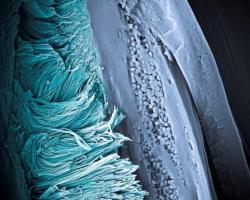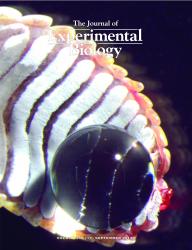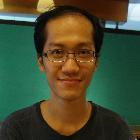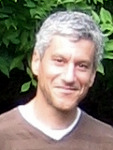U/Akron PhD Training in Biomimicry (Peter H. Niewiarowski)
 It has been a busy and successful launch of the Biomimicry Fellowships in the Integrated Bioscience Program at the University of Akron. Two major events kicked off the program, immersing the first cohort of Biomimicry Fellows (Emily Kennedy, Daphne Fecheyr-Lippens, and Bill Hsiung) in a flurry of activity just three weeks after their arrival on campus: a visit by Janine Benyus and the launch of a significant strategic initiative for biomimicry in Ohio.
It has been a busy and successful launch of the Biomimicry Fellowships in the Integrated Bioscience Program at the University of Akron. Two major events kicked off the program, immersing the first cohort of Biomimicry Fellows (Emily Kennedy, Daphne Fecheyr-Lippens, and Bill Hsiung) in a flurry of activity just three weeks after their arrival on campus: a visit by Janine Benyus and the launch of a significant strategic initiative for biomimicry in Ohio.
 The University of Akron was proud to host a public lecture by Janine Benyus, co-founder of Biomimicry 3.8 and widely acclaimed author of “Biomimicry: innovation inspired by nature”. Janine spoke to an enthusiastic audience of about 1100, weaving together a story of the emergence of biomimicry as a discipline, the role and promise of northeast Ohio in the development of the discipline, and the evolution of Biomimicry 3.8 as a catalyst for global dissemination of the biomimicry meme helping to reshape our built environment.
The University of Akron was proud to host a public lecture by Janine Benyus, co-founder of Biomimicry 3.8 and widely acclaimed author of “Biomimicry: innovation inspired by nature”. Janine spoke to an enthusiastic audience of about 1100, weaving together a story of the emergence of biomimicry as a discipline, the role and promise of northeast Ohio in the development of the discipline, and the evolution of Biomimicry 3.8 as a catalyst for global dissemination of the biomimicry meme helping to reshape our built environment.
The University of Akron (UA) was proud to announce, on the eve of Janine’s visit, a new strategic initiative to design and build a biomimicry research and innovation center with collaboration of partners like Biomimicry 3.8, Great Lakes Biomimicry, The Cleveland Institute of Art, and visionary companies like Sherwin Williams, GOJO, Parker Hannifin, and Ross Environmental Services (all founding sponsors of Biomimicry Fellows in the Integrated Bioscience PhD program). The UA strategic initiative, fueled by an investment of 4.25 million dollars, will fund, among other things over the next 2-3 years, the hiring of at least 10 new faculty doing biomimetic research that spans the disciplines of science, engineering, design and business.
 The biomimicry research and innovation center at UA will build on the substantial foundation created by the diversity of existing biomimicry related research such as the structural color created by nanofibers in blue-feathered penguins and the complexities of gecko adhesion. Equally important are the continuing efforts of our major strategic partner, Great Lakes Biomimicry, to bring corporate and foundation partners into the effort through the funding of Biomimicry Fellowships.
The biomimicry research and innovation center at UA will build on the substantial foundation created by the diversity of existing biomimicry related research such as the structural color created by nanofibers in blue-feathered penguins and the complexities of gecko adhesion. Equally important are the continuing efforts of our major strategic partner, Great Lakes Biomimicry, to bring corporate and foundation partners into the effort through the funding of Biomimicry Fellowships.
A call for new applications for Biomimicry Fellowships starting the fall of 2013 is open, including fellowships to work in industry as well as K12 school contexts.
For more information about the Biomimicry initiative or the Biomimicry Fellowships for Fall 2013, please contact Peter Niewiarowski.
First Cohort of Biomimicry Fellows
 Daphne Fecheyr-Lippens, sponsored by Parker Hannifin, comes from Belgium and chose to pursue a doctoral degree as part of this program because she believes that we as humans have the power to choose how to influence our environment. In addition, she says "it provides us a new source for innovative and sustainable designs that will assist us to make a positive impact on the future."
Daphne Fecheyr-Lippens, sponsored by Parker Hannifin, comes from Belgium and chose to pursue a doctoral degree as part of this program because she believes that we as humans have the power to choose how to influence our environment. In addition, she says "it provides us a new source for innovative and sustainable designs that will assist us to make a positive impact on the future."
 Bor-Kai "Bill" Hsiung from Taiwan through the University of California, Riverside is sponsored by Sherwin-Williams, and he states that he decided to become part of the program because "I believe biomimicry will be the next big thing after the industrial revolution. It has the potential to reinvent the ways that we humans manufacture our products and it's the hope to more sustainable and eco-friendly technologies. However, in the field of biomimicry currently, there are still some fundamental gaps between biological research ends and the application ends in the real world. Therefore, by joining this program, I hope that I will be able to bridge these gaps."
Bor-Kai "Bill" Hsiung from Taiwan through the University of California, Riverside is sponsored by Sherwin-Williams, and he states that he decided to become part of the program because "I believe biomimicry will be the next big thing after the industrial revolution. It has the potential to reinvent the ways that we humans manufacture our products and it's the hope to more sustainable and eco-friendly technologies. However, in the field of biomimicry currently, there are still some fundamental gaps between biological research ends and the application ends in the real world. Therefore, by joining this program, I hope that I will be able to bridge these gaps."
 Emily Kennedy, sponsored by GOJO, is from Boston, Massachusetts. She learned about biomimicry while studying at the University of Wollongong in Australia. Emily was drawn to the doctoral degree program at Akron "because of its incredible potential to change Northeast Ohio and the world. Daphne, Bill, and I are from three different continents, but we are united in our belief that biomimicry is the key to a sustainable future. In Ohio, people like the staff of Great Lakes Biomimicry, business leaders, and university professors who share that vision surround us. We're only a few months into this program and we're already building momentum towards the shared goal of large-scale sustainable innovation. I'm very excited to see where the next few years take us!"
Emily Kennedy, sponsored by GOJO, is from Boston, Massachusetts. She learned about biomimicry while studying at the University of Wollongong in Australia. Emily was drawn to the doctoral degree program at Akron "because of its incredible potential to change Northeast Ohio and the world. Daphne, Bill, and I are from three different continents, but we are united in our belief that biomimicry is the key to a sustainable future. In Ohio, people like the staff of Great Lakes Biomimicry, business leaders, and university professors who share that vision surround us. We're only a few months into this program and we're already building momentum towards the shared goal of large-scale sustainable innovation. I'm very excited to see where the next few years take us!"
Image Credits:
- Networked world: © ktsdesign - Fotolia.com
- Penguin feathers: Matthew Shawkey
- JEB Cover Image: Journal of Environmental Biology (research of Stark, Sullivan and Niewiarowski)

Peter H. Niewiarowski is the Interim Director of Integrated Bioscience at the University of Akron. He is an evolutionary ecologist and works mainly with lizards (currently geckos, previously fence lizards) and salamanders. His research includes both laboratory and field projects.

Doug Paige is an award-winning industrial design professional. He is an Associate Professor of Industrial Design at The Cleveland Institute of Art. and has an impressive working background in the Industrial Design field including ID Focus, Ron Loosen Associates, Thomson Consumer Electronics and his own company, Douglas J. Paige Design.
